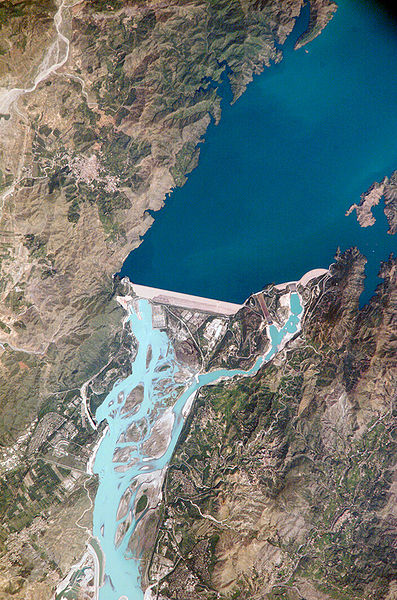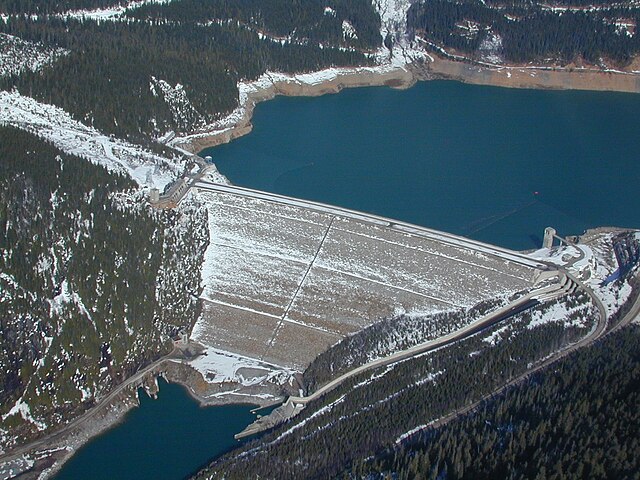An embankment dam is a large artificial dam. It is typically created by the placement and compaction of a complex semi-plastic mound of various compositions of soil or rock. It has a semi-pervious waterproof natural covering for its surface and a dense, impervious core. This makes the dam impervious to surface or seepage erosion. Such a dam is composed of fragmented independent material particles. The friction and interaction of particles binds the particles together into a stable mass rather than by the use of a cementing substance.
Chatuge Dam in North Carolina.
Tarbela Dam in Pakistan. It is the largest earth-filled dam in the world.
The Mica Dam in Canada.
Tataragi Dam in Asago, Hyōgo Pref., Japan.
A dam is a barrier that stops or restricts the flow of surface water or underground streams. Reservoirs created by dams not only suppress floods but also provide water for activities such as irrigation, human consumption, industrial use, aquaculture, and navigability. Hydropower is often used in conjunction with dams to generate electricity. A dam can also be used to collect or store water which can be evenly distributed between locations. Dams generally serve the primary purpose of retaining water, while other structures such as floodgates or levees are used to manage or prevent water flow into specific land regions.
The Edersee Dam in Hesse, Germany
The Roman dam at Cornalvo in Spain has been in use for almost two millennia.
Remains of the Band-e Kaisar dam, built by the Romans in the 3rd century AD
An engraving of the Rideau Canal locks at Bytown








